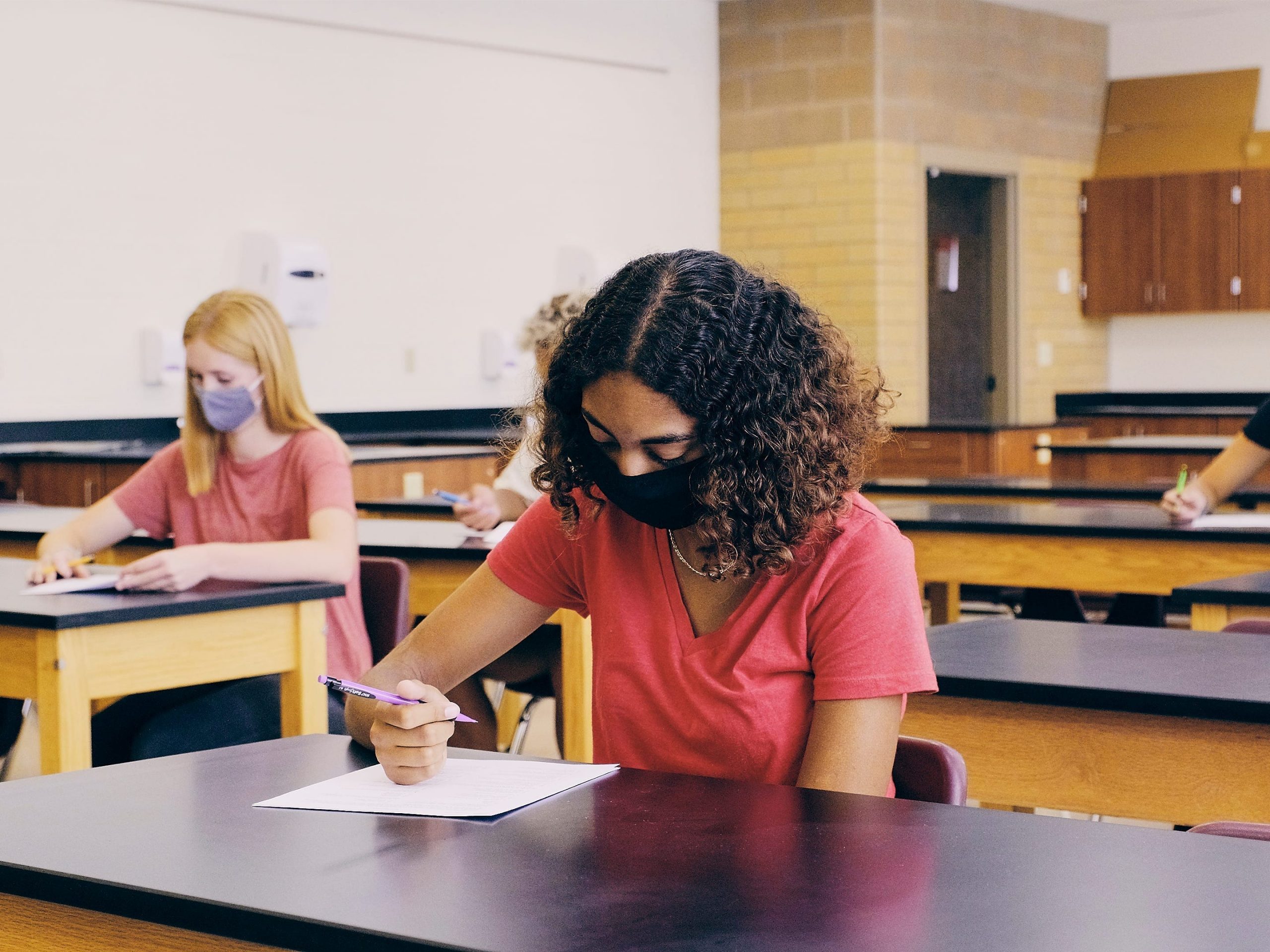
RichLegg/Getty Images
- An MIT study published Tuesday suggested social distancing did little to limit airborne coronavirus transmission indoors.
- But the study didn't look at whether social distancing stops coronavirus spreading via other routes.
- The virus can also spread in larger droplets when people cough or sneeze, or via direct contact with surfaces.
- See more stories on Insider's business page.
A study published Tuesday in a world-leading medical journal said that 6-foot social distancing indoors did little to stop the spread of coronavirus indoors – but it didn't take into account all the ways the virus spreads.
Crucially, the Massachusetts Institute of Technology (MIT) study focused on airborne transmission of very small droplets. The study didn't look at whether distancing stops the virus spreading via two other possible routes: first, larger respiratory droplets, and second, direct contact.
According to the Centers for Disease Control and Prevention (CDC), coronavirus mostly spreads through large respiratory droplets. This can happen when people are within about 6 feet or each other for a prolonged period, and an infected person coughs, sneezes, or talks, launching droplets from their mouth or nose into the air and onto other nearby people.
It is also possible to catch coronavirus by touching a surface or object that has the virus on it and subsequently touching the mouth, nose, or eyes. This is called direct contact. This is not thought to be the main way the virus spreads, according to the CDC.
Social distancing could stop the virus from spreading in these ways, according to the CDC and World Health Organization (WHO).
Bryan Bzdek, research fellow at the Bristol Aerosol Research Centre at the University of Bristol, told Insider that physical distancing reduces exposure to the largest droplets, which "travel like cannonballs" and settle on the ground quickly.
He said distancing helps reduce exposure to smaller aerosol droplets, too, because their concentration is always highest nearer the source, i.e., a person's mouth and nose.
"If you are standing farther away, there is more time for that plume to dilute, reducing exposure," Bzdek explained.
The MIT researchers didn't advocate scrapping social distancing entirely. They said in a joint statement Sunday that the study indicated the 6-feet rule was "insufficient" to stop airborne transmission of coronavirus indoors.
In "well-mixed" spaces, where effectively everyone in the room is breathing the same air, no-one is safer from airborne pathogens at 60 feet apart than at 6 feet apart, Martin Byzant, professor of chemical engineering and applied mathematics at MIT, and John W. M. Bush, professor of applied mathematics, said.
People must also limit the time they spend in an indoor space, they said. According to the study, risk depended on the number of people in a space, the type of activity, ventilation, and mask-wearing.
Byzant and Bush created a guideline for policy makers, schools, and individuals to gauge the risk of catching coronavirus indoors based on these factors.
Bzdek told Insider that in a poorly ventilated space, like the ones considered in the study, the aerosol levels would gradually build up over time, increasing exposure with time spent in the room. But the fact remains that the guidance was based on just one route of transmission, and the authors' physics-based models assumed coronavirus particles always spread evenly throughout a room.
Howard Stone, a professor of mechanical and aerospace engineering at Princeton University, who was not involved in the study, told MIT News that the analysis was a valuable tool for estimating the maximum time to spend indoors with others, but it was a "rough estimate."
